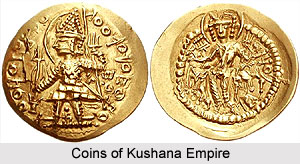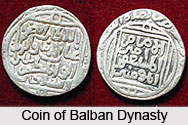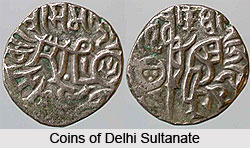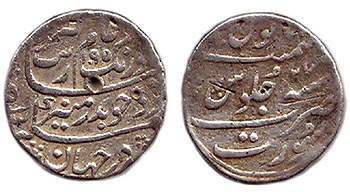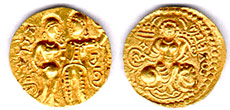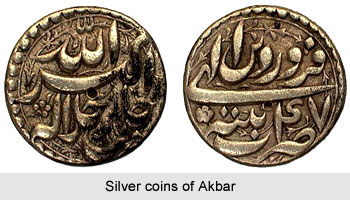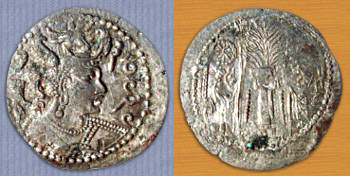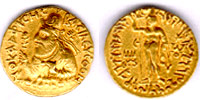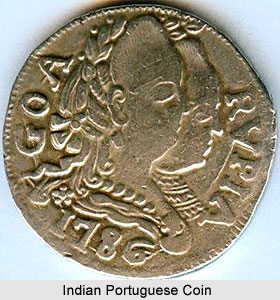Coins of Gujarat reflect the fact that there existed a well organised monetary system in the region. In that era, a sophisticated system of commerce would function on a barter basis. The range of the coins of Gujarat extended to Mewar in southern Rajasthan, for the minister of Udaya Simha of Jalor. They are believed to an exchange value of regular drammas against parutha drammas. In the south, the apparent range of this coin included Kalyana, near Thana, where an inscription of 1184 AD from Aparaditya II`s rule, refers to poruthi drammas and paruttha drammas. The coins ranged even further south along the Konkan coast, for an inscription of the Silahara ruler Somesvara of AD 1260, from Chauji, refers to poruttha drammas.
Although the paruttha drammas had wide circulation, they were produced in a Gujarati mint. The Lekhapaddhati records that the paraupatha dramma or para patha dramma was struck and thrice examined in the Srimala mint. Srimala or Bhillamala, modern Bhinmal, was a city north of Anhirwada Pattan, governed by hereditary rajas of the Paramara lineage until before AD 1178, and of the Chauhan lineage thereafter, both under the suzerainty of the Chaulukya kings. So, to summarise the literary and epigraphic evidence, paruttha drammas struck in Gujarat, circulated from southern Rajasthan to the northern Konkan at least from AD 1022 to 1206, and probably both earlier and later. The paruttha dramma appears to have been replaced by other coins in the later years. Finally there are references to a bhimapriya dramma, bhimapuri dramma or khimasena dramma, all varieties of the same name. There is further evidence of coins manufactured in Gujarat and circulating in northern Gujarat and southern Rajasthan at least from AD 1231 to 1299, and thus consecutive with the paruttha dramma.
Coins of Gujarat are traceable to the Chapa dynasties of Saurashtra and the Saraswati River valley. In this period, their minimum precious metal content was around 3.27 g, which was substantially in excess of the value of coins of Marwar or of that of Ganga basin. The coins of Gujarat passed at a growing premium over the other coins of that era. The production of coins is considered to be continuous, as cited by different historians. They have also established the direct association of Gujarat monarchy with the manufacture of the coins of the region. The billon coinage of Gujarat was considered to be a trading currency par excellence
